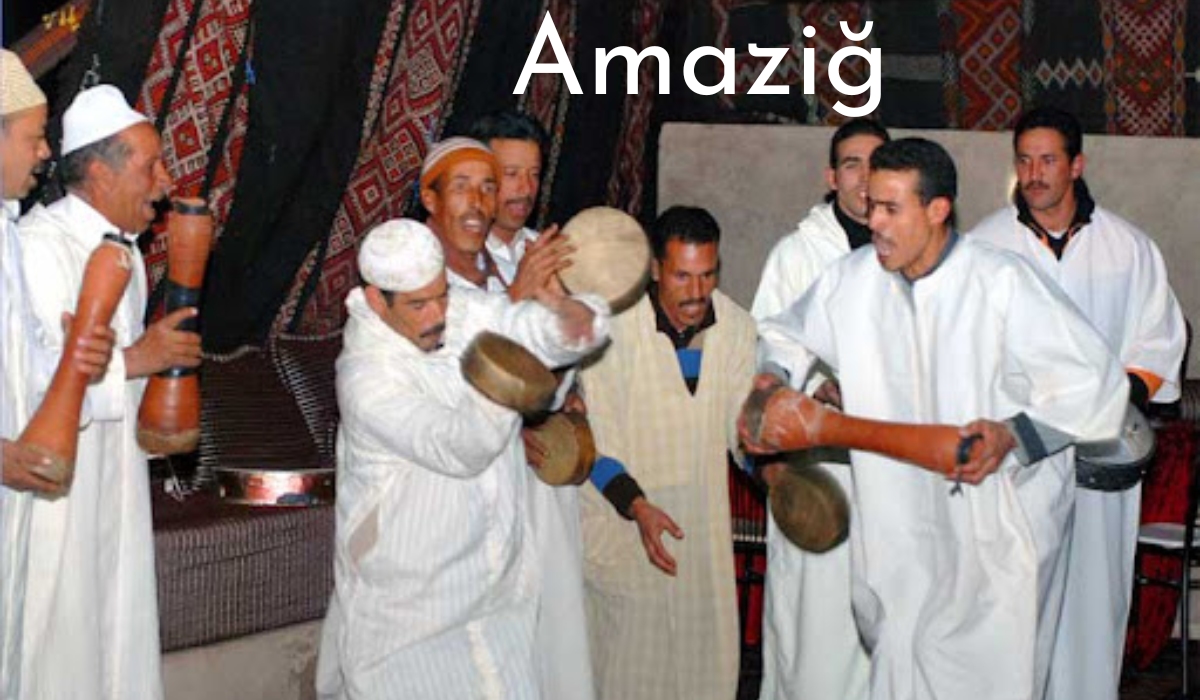Origins of Amaziğ
The origins of the Amaziğ people can be traced back thousands of years. They are believed to be the original inhabitants of North Africa, with a distinct language and culture that predates the arrival of Arab and European influences. The Amaziğ language, which belongs to the Afro-Asiatic family, is unique and has several dialects spoken across different regions.
Cultural Significance
Language and Identity
The Amaziğ language plays a central role in Amaziğ identity and culture. It is not only a means of communication but also a symbol of pride and heritage. Efforts to preserve and promote the language have gained momentum in recent years, with schools and cultural institutions advocating for its inclusion in education and media.
Art and Music
Amaziğ art and music are vibrant expressions of their cultural identity. Traditional Amaziğ music, characterized by its rhythmic beats and haunting melodies, has gained popularity both within and outside North Africa. Amaziğ art, including intricate textiles, pottery, and jewelry, reflects the rich history and craftsmanship of the Amaziğ people.
Amaziğ People Today
Distribution and Population
The Amaziğ people are spread across several countries in North Africa, including Morocco, Algeria, Tunisia, Libya, and Egypt. While exact population figures are difficult to determine due to the diverse nature of the Amaziğ population, estimates suggest that there are millions of Amaziğ people living in these countries today.
Lifestyle and Traditions
The Amaziğ people have a rich cultural heritage that is reflected in their lifestyle and traditions. Many Amaziğ communities maintain a semi-nomadic way of life, moving with the seasons and herding livestock. Their traditional clothing, food, and architecture are also unique to their culture and environment.
Misconceptions and Challenges
Despite their rich history and cultural significance, the Amaziğ people have faced challenges and misconceptions over the years. One of the most common misconceptions is that Amaziğ culture is primitive or backward, which is far from the truth. The Amaziğ people have a rich and complex culture that is worthy of respect and admiration.
Preserving Amaziğ Culture
Efforts to preserve Amaziğ culture are ongoing, with many organizations and individuals working tirelessly to ensure that future generations can continue to celebrate and embrace their heritage. Education plays a crucial role in this effort, with schools and universities offering courses in Amaziğ language and culture.
Education and Advocacy
Advocacy groups and cultural organizations play a vital role in preserving Amaziğ culture. They work to raise awareness about the importance of Amaziğ language and heritage and advocate for its inclusion in mainstream education and media.
Cultural Festivals
Cultural festivals and events are another way in which Amaziğ culture is preserved and celebrated. These festivals showcase traditional music, dance, food, and art, allowing both Amaziğ people and visitors to experience the richness of Amaziğ culture firsthand.
Conclusion
The Amaziğ people and their culture are a testament to the resilience and diversity of human civilization. Despite facing challenges and misconceptions, the Amaziğ people have managed to preserve their identity and traditions, making them an invaluable part of the cultural tapestry of North Africa.
FAQs
- What does the term “Amaziğ” mean?
- The term “Amaziğ” is often used to refer to the Berber people of North Africa and their language.
- How many people speak Amaziğ language?
- It’s estimated that around 25-30 million people speak the Amaziğ language worldwide.
- Is Amaziğ culture at risk of disappearing?
- While Amaziğ culture faces challenges, efforts to preserve and promote it are ongoing, giving hope for its continued existence.
- Are there different dialects of the Amaziğ language?
- Yes, there are several dialects of the Amaziğ language spoken across different regions of North Africa.
- What are some misconceptions about Amaziğ culture?
- One common misconception is that Amaziğ culture is primitive or backward, which is not true. Amaziğ culture is rich and complex, with a long history of art, music, and craftsmanship.

